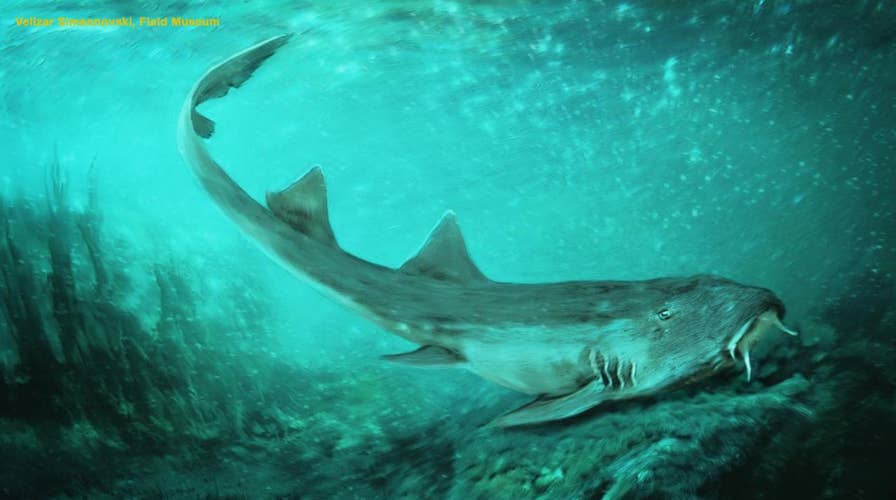Prehistoric shark teeth discovered alongside famous Tyrannosaurus
Scientists discovered the remains of a prehistoric shark known as Galagadon. The new finding may help researchers better understand what changed in the ecosystem during the mass extinction.
The remains of a small prehistoric shark that lived during the age of dinosaurs 67 million years ago have been found, to the surprise of scientists and onlookers alike, according to a new study.
Fossilized shark teeth were discovered in what is now modern-day South Dakota and were found in the same deposits as Sue the Tyrannosaurus rex, perhaps the famous T. rex specimen fossil ever unearthed. The freshwater shark had odd triangle-shaped teeth and, due to its resemblance to the spaceships in the 1980s video game "Galaga," it's been dubbed Galagadon nordquistae.
"It was so tiny, you could miss it if you weren't looking really carefully," said retired chemist Karen Nordquist, a volunteer who discovered the fossils, in a press release. "To the naked eye, it just looks like a little bump, you have to have a microscope to get a good view of it."
MEGALODON MAY HAVE GONE EXTINCT FOR THIS SHOCKING REASON
Described as the "diameter of the head of a pin" and "the size of a sand grain" by Terry Gates, the study's lead author, the teeth were only a millimeter wide, coinciding with the sharks' small stature, at less than two feet in length.
"It's not exactly Jaws," Pete Makovicky, the Field Museum's curator of dinosaurs and one of the co-authors of the study said in the release.
Makovicky likened it to modern-day bamboo sharks, noting it "probably had a flat face and was very likely camouflage-colored, since its relatives today have a camouflage pattern."
Contrary to the imagination of young children and B-movie screenwriters everywhere, the shark was not looking to eat T. rex or any other dinosaur, for that matter.
“Galagadon was not swooping in to prey on T. rex, Triceratops, or any other dinosaurs that happened into its streams," Gates said in a statement. "This shark had teeth that were good for catching small fish or crushing snails and crawdads.”
"This wasn't some Sharknado event--these animals were making their way up rivers from the sea," Makovicky said in the release, referencing the popular SyFy made-for-TV movies which have become a cultural phenomenon.
The topography of South Dakota today is very different than it was 67 million years ago, Gates added. “It may seem odd today, but about 67 million years ago, what is now South Dakota was covered in forests, swamps and winding rivers.”
Gates said the discovery of Galagadon will help researchers learn more the Cretaceous period prior to the extinction of non-aviary dinosaurs.
“Every species in an ecosystem plays a supporting role, keeping the whole network together,” he said. “There is no way for us to understand what changed in the ecosystem during the mass extinction at the end of the Cretaceous without knowing all the wonderful species that existed before.”
The study, detailing the findings, has been published in the Journal of Paleontology.
CLICK HERE TO GET THE FOX NEWS APP
Follow Chris Ciaccia on Twitter @Chris_Ciaccia




















